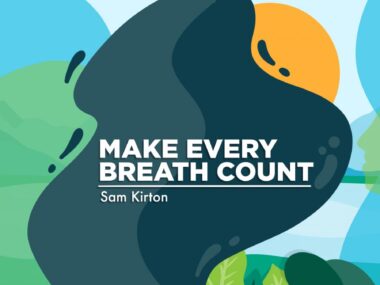Living fully after my late husband’s pulmonary fibrosis diagnosis
Even with IPF and cancer, Steve stayed as active as possible
Written by |

In 2009, I was at a point in my career in cardiology where I’d helped save many lives. I could spell both “pulmonary” and “fibrosis” because of some early transcription work I’d done, but I didn’t know much about pulmonary fibrosis (PF). I was quickly introduced to it when my late husband, Steve, was diagnosed that year with idiopathic PF.
My name is Debbie Klein, and when asked to write this column, I didn’t have to think twice. Not because I think I’m a good writer, but because I want anyone diagnosed with PF to be aware of the journey they are about to embark on. Being my husband’s caregiver was much different from the type of healthcare I’d chosen as my career.
When Steve was diagnosed, like many others, we went straight to Google. The prognosis of “three to five years” may as well have been in bold because it stood out from everything else. Unlike many others with PF, doctors suspected Steve’s diagnosis immediately, and a high-resolution CT scan was ordered and completed without delay. (It helped that a radiologist and a cardiologist whom I’d worked with for years recognized the red flags.) Fortunately, our local pulmonologist referred us to a care center where one of the world’s renowned pulmonologists led the interstitial lung disease (ILD) program.
This all occurred prior to the U.S. Food and Drug Administration’s approval of Esbriet (pirfenidone) and Ofev (nintendanib). Steve was in a clinical trial called PANTHER-IPF, but it was halted abruptly due to unfavorable results.
About four years after Steve’s diagnosis, the ILD program director thought he should begin the workup for a transplant. I remember rolling my eyes because I didn’t think he was that close to being ready.
The first procedure involved in the workup was a colonoscopy. Steve was 64 at the time; you’d think his wife would have seen to it that he started getting screened at age 50, but unfortunately, this was his first colonoscopy. The procedure revealed a malignancy in his large bowel, and a follow-up CT scan showed a malignancy in his liver as well. His cancer was classified as stage 4.
Two major surgeries and two rounds of chemotherapy in less than two years only exacerbated his PF. When a huge embolus (blood clot) in his pulmonary artery brought seven firemen and paramedics to our home, we thought the end was imminent. However, he rallied, and we had him for another 17 months.
Going the extra mile
Our main goal through this journey was to live with PF. We tried to stay as active as possible. In fact, Steve would golf with a good friend who would putt for him to save Steve from having to walk the green. Steve once told him, “I’d have a much better score if you were a better putter!”

Debbie and Steve Herndon cheer on the Boise State Broncos one last time in 2015. (Photo by Debbie Klein)
As avid fans of our local university’s basketball and football teams, we continued to attend games. However, we went to fewer basketball games because of the confines of the arena. The last two football games we attended were only a month before he passed away.
Attending the games took some effort. We had to obtain extra portable oxygen units from the supplier (Steve was using liquid oxygen) and use a roller seat and storage cart to carry the extra units and allow him to rest if needed. I’d drop him off as close to the entrance as possible and then find parking on my own. We had to locate the elevators and ask facility staff if we could store the extra oxygen units and storage cart in the adjacent alumni center for ease of exchange during the game. Then we’d leave the game a few minutes early to avoid crowd congestion. (We never left early prior to this!)
I wondered if it was all worth it to him, and was grateful when he thanked me profusely for going the extra mile.
It’s been 16 years since that devastating diagnosis. Before Steve’s death in 2015, I promised him I would continue to learn as much as I could about PF and use our experience to help others.
I currently lead an online support group for PF patients and another one for caregivers. Doing so has been a poignant and cathartic piece (peace!) of my healing journey.
Note: Pulmonary Fibrosis News is strictly a news and information website about the disease. It does not provide medical advice, diagnosis, or treatment. This content is not intended to be a substitute for professional medical advice, diagnosis, or treatment. Always seek the advice of your physician or other qualified health provider with any questions you may have regarding a medical condition. Never disregard professional medical advice or delay in seeking it because of something you have read on this website. The opinions expressed in this column are not those of Pulmonary Fibrosis News or its parent company, Bionews, and are intended to spark discussion about issues pertaining to pulmonary fibrosis.







Dennis Luong
It was probably all the fumes from chemicals on the golf course that caused it. Toxic fertilizer fumes from golf courses has even been linked to Parkinson's.
Debbie Klein
Interesting, however, my late husband was an occasional golfer. More than likely his IPF had connections to forest fire lookout duties or smudge pots in orchards.
John Harrigan
Debbi,
Thank you for that great posting.
Can you tell us how to access your support groups.
John
Debbie Klein
I will add your email to my invite list!